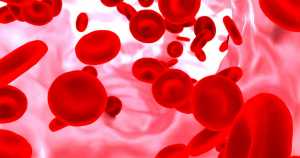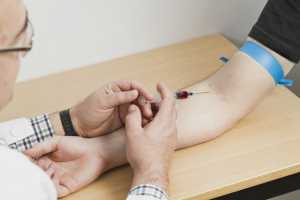RDW Blood Test- Understand The Test And Interpret Your Results
Red Blood Cell Distribution Width blood test shows the variation in size and volume of your red blood cells. Red blood cells(RBC), one of the major components of our blood, carries oxygen from lungs to various parts of your body. Your cells require oxygen to remain healthy, grow and reproduce.
The standard size of normal RBCs is 6 to 8 micrometres (µm) in diameter. Your RDW blood test results can be higher if your RBCs are smaller or larger than normal, which indicates that you have an underlying condition. If the RDW value is outside the normal range, it can be a sign of a problem with body function, which may affect the flow of oxygen from the lungs to parts of your body. Even if you have normal RDW, you may have certain diseases.
Since a person with normal RDW can still have an underlying condition, doctors may take into consideration the results of other blood tests as well. Your RDW test results will be compared with that of MCV test results. A Mean Corpuscular Volume Test checks the average volume of RBC in a finger-prick blood sample. To properly diagnose your condition, your doctor may compare the RDW and MCV results to measure the volume of your Red blood cells.

Why Is RDW Blood Test Done?
An RDW blood test is typically used to diagnose anaemia and different conditions such as:
- Thalassemia( a blood disorder characterised by reduced production of a protein called haemoglobin)
- Cancer, especially colorectal cancer( cancer that affects colon)
- Liver disease
- Heart disease
- Diabetes
Your doctor may order an RDW blood test if you have:
- Anaemia symptoms such as pale skin, numbness or dizziness
- Chronic illness like HIV, AIDS, Diabetes or Crohn’s disease( a long-term inflammatory disease that affects digestive tract)
- Family medical history of blood disorder, i.e., Sickle cell anaemia( a disorder in which RBCs deform and break down) or thalassemia
- Significant blood loss following a surgery or injury
- Vitamin or iron deficiency
- A diet which is low in mineral and iron
The Procedure Of RDW Blood Test

Before you undergo an RDW blood test, you will be asked to fast by your doctor for a few hours, based on the other tests that you need to take. Before the test, your doctor may give you special instructions. The test lasts typically for less than five minutes. The test is simple and quick.
Your healthcare provider will draw blood from a vein using a small needle. When the needle goes in, you may feel a stinging sensation. Your blood will be collected in a tube, and once the tube is filled, the needle will be removed from your arm. To stop the bleeding, some pressure and a bandage will be applied over the puncture site. For testing, your blood will be sent to the laboratory, where the lab technician examines both red blood cell size and distribution.
There are minimal risks associated with an RDW blood test. You may experience slight pain or bruise in the puncture site, but these symptoms quickly go away.
RDW Blood Test Results

Results show the variation in your Red Blood Cell’s size and volume in your blood sample. The test results show normal RDW or high RDW, and the ranges differ.
Normal RDW
For an adult male, the normal range of RDW is 11.8 to 15.6 per cent, whereas, in the case of an adult female, it is 11.9 to 15.5 per cent.
- If your RDW is normal and the MCV is also normal, then you may still have anaemia due to blood loss or a chronic medical condition.
- When your RDW is normal, but the MCV is low, then it can be a sign of anaemia as a result of thalassemia or a chronic condition.
- If your RDW is normal, but the MCV is high, then it can be a sign of a liver condition or alcohol abuse. You can even receive this result if you’re on chemotherapy or antiviral drugs. If other blood components are affected, it may indicate aplastic anaemia (inability of the body to produce sufficient blood cells).
High RDW
If your results are above the normal RDW range, it is called a high RDW count, which can be a sign of:
- Microcytic anaemia: It is a condition characterised by the presence of red blood cells that are smaller than its normal size.
- Macrocytic anaemia: It is a condition characterised by the presence of red blood cells that are larger than its normal size.
Your doctor may compare both the RDW blood test results and MCV results to confirm a diagnosis.
- If your RDW is high whereas MCV is normal, then it indicates chronic liver disease or deficiency of folate, B-12 or iron.
- When the RDW is high whereas MCV is low, then it indicates microcytic anaemia or iron deficiency.
- If your RDW is high, whereas MCV is high, then it indicates chronic liver disease or macrocytic anaemia. It can also indicate a lack of folate or B-12.
Frequently Asked Questions

Why is RDW high in the case of iron deficiency anaemia?
Iron deficiency anaemia is caused by a lack of iron in your body. Wide variation in the size of red blood cells is the hallmark of iron deficiency anaemia. And therefore your results show high RDW. Normally there will be a mix of smaller and larger cells for B12 and iron deficiencies, causing the RDW to be high.
What are the other tests done to identify anaemia?
In addition to RDW blood test, reticulocyte count test, blood smear test, iron studies, vitamin B12 test, haemoglobin electrophoresis, and bone marrow studies are done to identify anaemia.
What are some of the types of anaemia that you may have, even if your RDW is normal?
If your RDW is normal and the MCV is also normal, then you may still have anaemia. Examples of anaemia that you may have, even if your results show normal RDW are- Thalassemia, aplastic anaemia (inability of the body to produce sufficient blood cells), anaemia of chronic disease, alcohol abuse anaemia (anaemia as a result of heavy drinking), and liver disease.
What does it mean if you’re having low RDW?
A low RDW is desirable since it is a sign that your RBCs are uniform in size. A low RDW is not a cause for concern. But even if you have a low RDW, still you may have a blood disease.
What is RDW on CBC?
The RDW blood test is often done as a part of a test that checks the components of blood, called the Complete Blood Count test(CBC test). A CBC test measures blood components such as red blood cells, white blood cells, and platelets as well as determines the number and type of blood cells.
How do you treat anaemia?
Anaemia is a treatable medical condition but can cause fatal complications if it’s not diagnosed or treated correctly. Suppose your RDW blood test results indicate that you have anaemia. In that case, you need to undergo treatment to increase the capacity of your red blood cells. Based on the severity of your existing condition, your doctor may recommend medications, iron supplements and ask you to make changes in your diet.